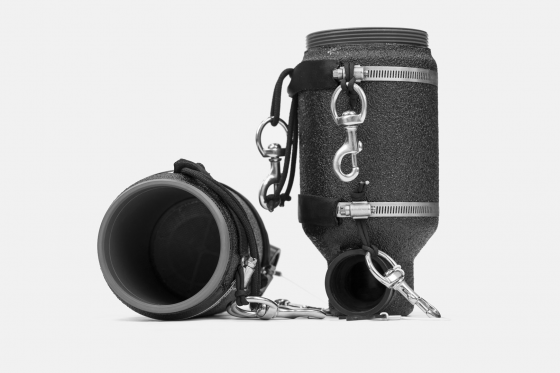KISS SIDEWINDER is equipped with two scrubbers. The right scrubber head is fitted with hose connections providing oxygen and diluent as well as Automatic Diluent Valve (ADV). The left scrubber head contains three oxygen sensors with a wire for connecting a PPO2 measuring device and a relief valve. The unit comes with a counterlung fitted between the diver’s back and the sidemount harness, which connects the scrubbers, and corrugated rubber hoses for the DSV (Dive Supply Valve).
The exhaled gas goes through none-return mushroom valves to the right scrubber head (exhale side), where oxygen is injected through a small orifice and, as needed, diluent is added via Automatic Diluent Valve or still more oxygen via Manual Addition Valve. Subsequently the gas moves through the right scrubber, where it is cleaned of carbon dioxide for the first time, and is injected into the counterlung. Then inhale causes the gas to flow from the counterlung to the left scrubber (inhale side), where carbon dioxide is removed for the second time. Before the gas reaches the diver’s lungs, three oxygen sensors provide data on current PPO2 level.
Manufacture KISS SIDEWINDER set does not include: sidemount harness, tanks, sidemount regulators and oxygen tank – however there is no need to change currently used harness and tanks – all harness models and tank sizes are compatible with SIDEWINDER CCR.
The rest of components which are in the below picture are in the manufacture set.
The only exception is the computer that monitors the level of oxygen in the loop – a user can choose Shearwater or Divesoft computer or can use his own (each option generates price differences). It is also possible to connect a second computer, HUD or display using an additional port located in the head and a splitter (splitter or spliting board) enabling the connection of both cables to the same oxygen sensors.
There is two versions : for warm water and cold water. For diving in water with temperature bekol 16 Celsjus degrees the producent covers outside surface of canisters with special insulating material which increases efficiency of scrubber in cold water by 20%
KISS Rebreathers also provides the ability to personalize the unit according to their own preferences, giving customers the ability to choose the type and level of redundancy of key elements of the unit. The configurator with prices can be found HERE
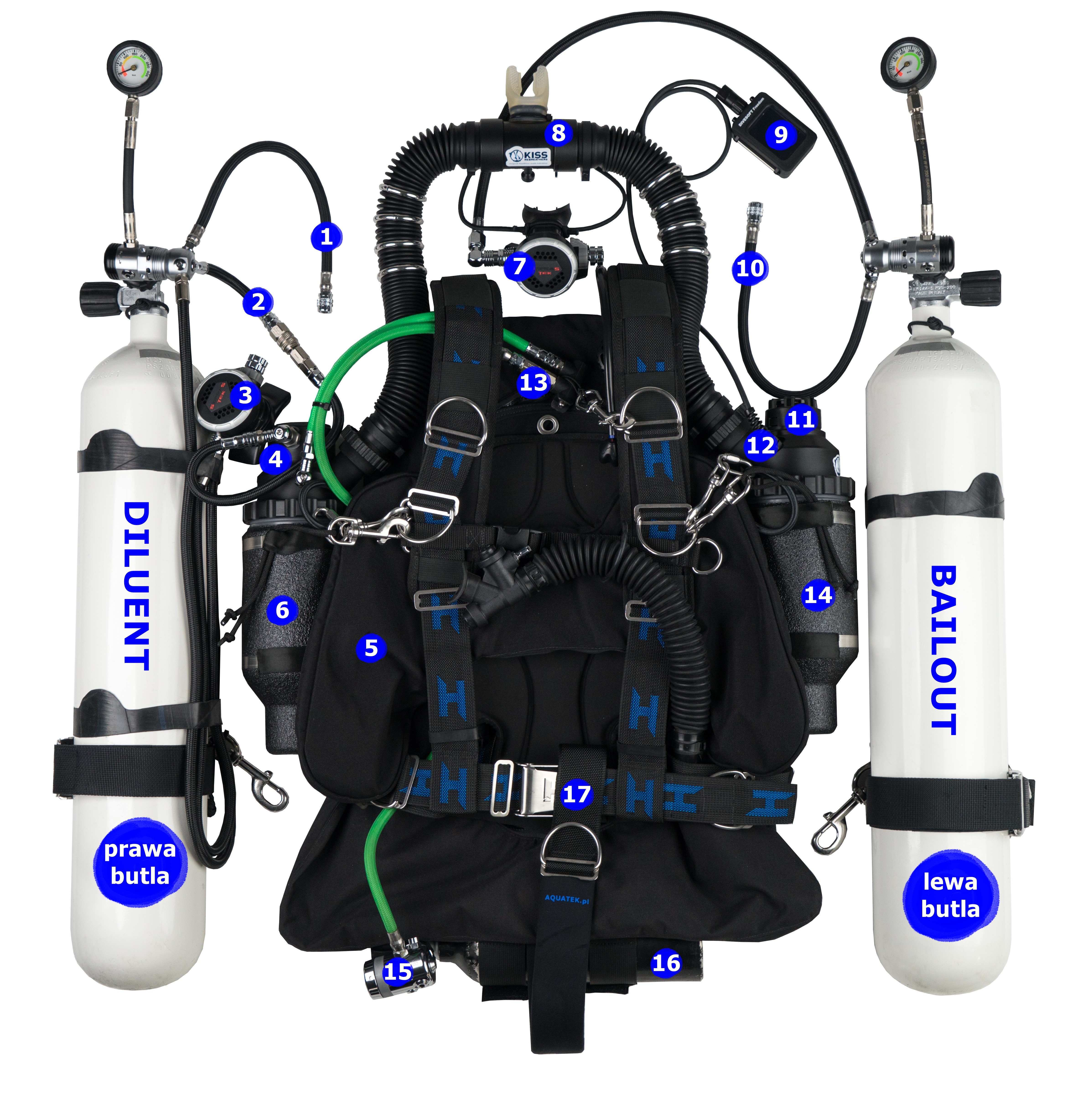
- BCD hose
- Off board diluent connection
- Regulator with 2m hose (for buddy or bailout #2)
- ADV – automatic diluent valve
- Counterlung
- Right scrubber canister
- Bailout regulator #1
- DSV – Dive Surface Valve
- Oxygen monitoring
- Dry suit hose
- Over pressure valve
- Head with 3 oxygen cells
- Oxygen manual add valve
- Left scrubber canister
- Oxygen regulator
- Oxygen tank (0,85-2 ltr)
A LITTLE MORE DETAIL
To better understand the intricacies of this equipment let us have a closer look at individual components that are characteristic of the Kiss Rebreathers brand and the Sidewinder unit in particular.
MANUAL ADDITION VALVE (MAV) & CONSTANT MASS FLOW ORIFICE (CMF)
In the Sidewinder unit, oxygen is delivered to the exhaled gas, i.e. the right absorbent canister, through a constant flow orifice (CMF) and, if necessary, manually. The supply hose is mounted in the head. The injection site was placed here to allow time to obtain a homogeneous mixture before measurement - the gas flows through the absorbent canister, the counter-lung and then the second absorbent canister, so that the gas is well mixed before it reaches the oxygen sensors located in the left scrubber head.
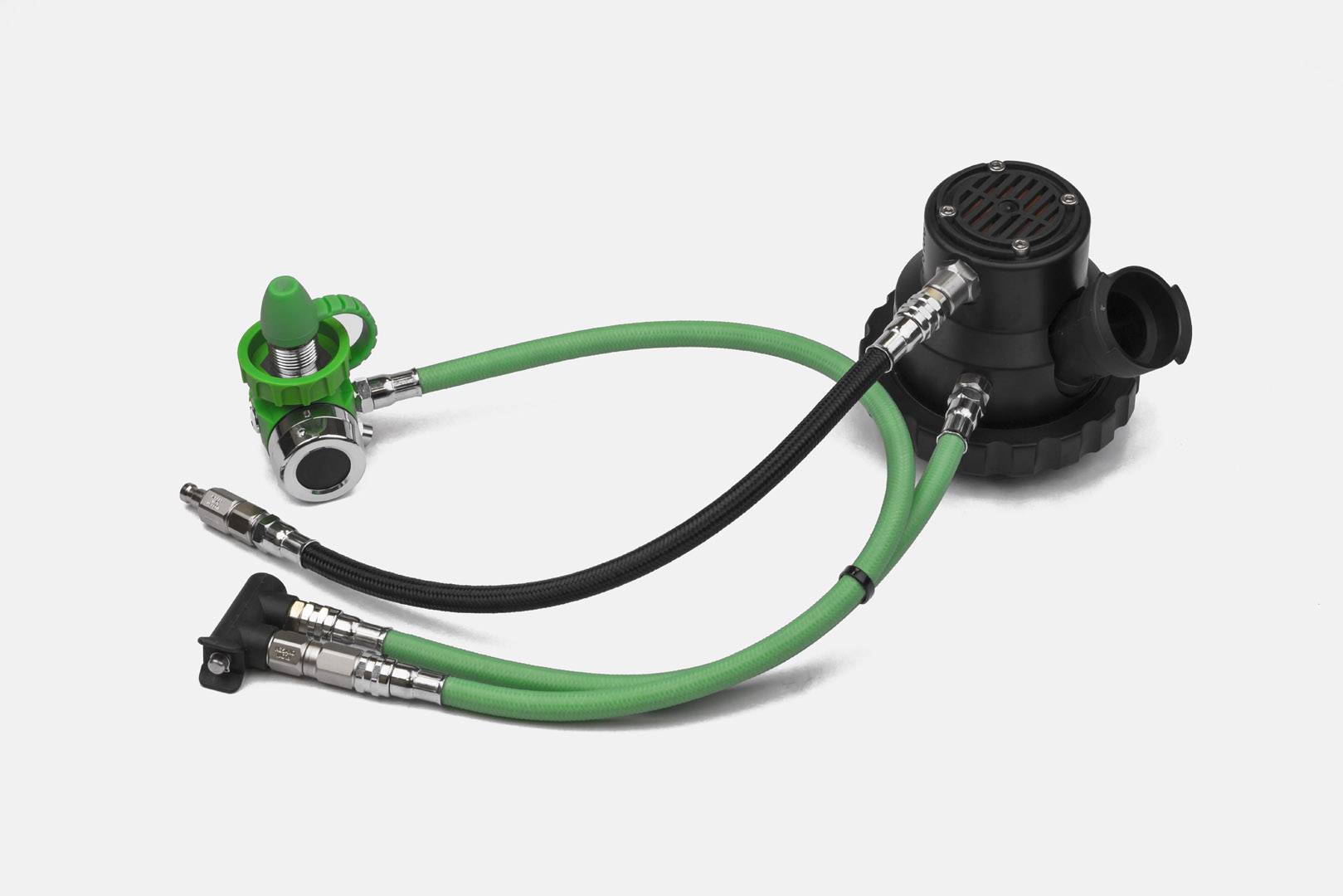
The flow of oxygen from the oxygen regulator with constant interstage pressure is provided by a CMF orifice. This constant mass flow orifice (a small hole placed in the MAV) gives, at a constant inlet pressure, a precisely defined flow, which is independent of the ambient pressure (within the depth limits specified by the manufacturer of the KISS device, i.e. 93m). As a result, we get a constant gas flow of a certain value even with an increase in depth. To maintain a constant inlet pressure, a specially blocked first stage of the regulator was used (instead of the classic flexible diaphragm transmitting the ambient pressure, a Derlin plug was installed). There is a non-return valve (non-return valve) between the MAV and the supply hose.
Instead of the standard MAV, the unit can be equipped with a Dual button MAV that allows manual addition of both oxygen and diluent.
COUNTERLUNG
The sidewinder utilizes a single counterlung. The counter-lung has been positioned between the body and the harness. This positioning creates a clear chest area for diving, making it easy to work with stage cylinders and reduce vision impairment caused by bulky front or shoulder mounting counter-lung. The Kiss Spirit Sidewinder has 2 different counterlungs available. The lungs have approximately the same volume, the difference is shape.
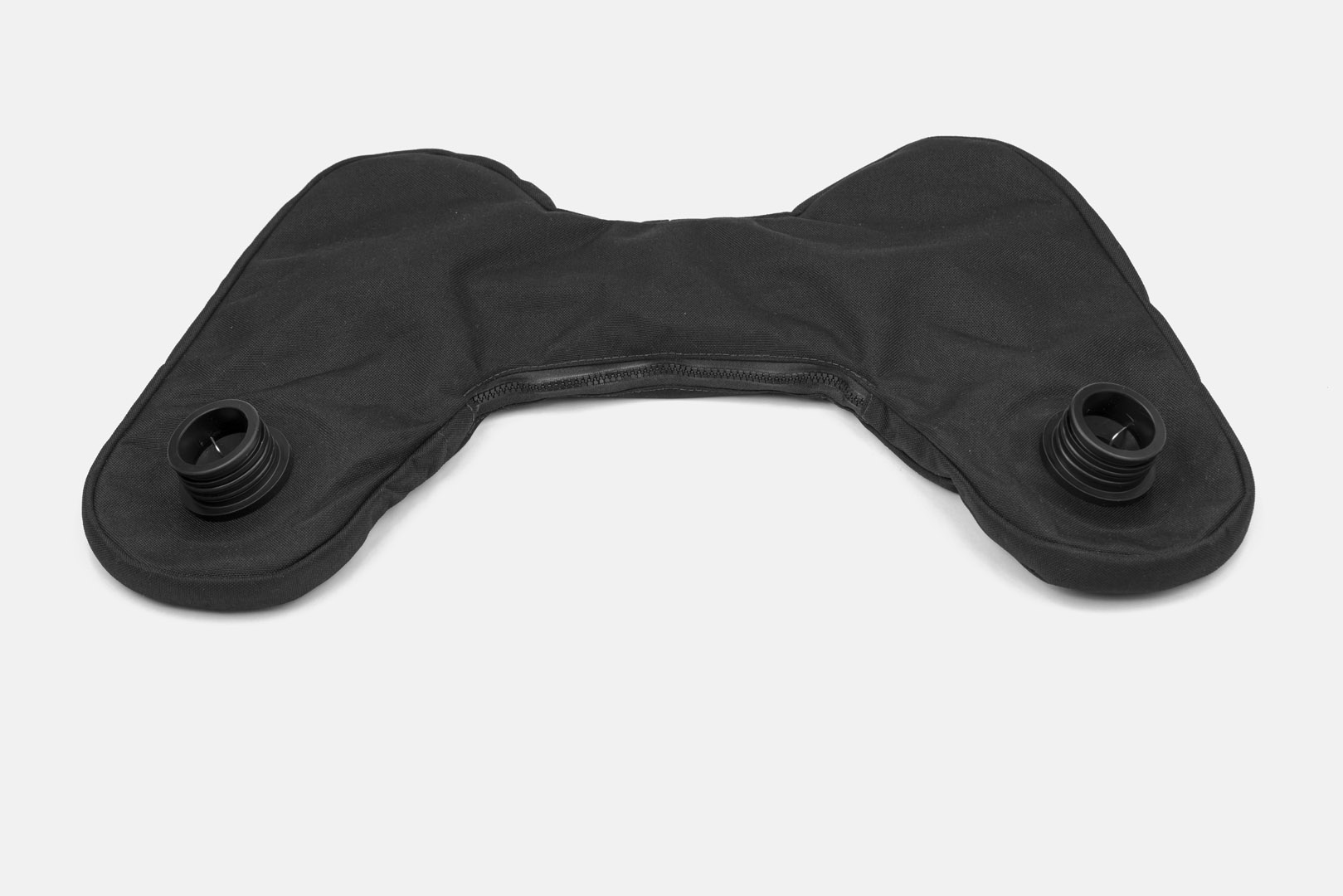
DSV – MOUTHPIECE
The unit includes standard rebreather mouthpiece. The mouthpiece on this system is a Dive Supply Valve (DSV) and does not include bailout system as other rebreather mouthpieces do. The loop hoses will have 4 ballast rings, for a total 8 rings on the breathing loop. They should be positioned so that the loop hoses are neutral, and the mouthpiece is not pulling in your mouth.
At the customer's request, the unit can be equipped with BOV (Bailuot Valve).
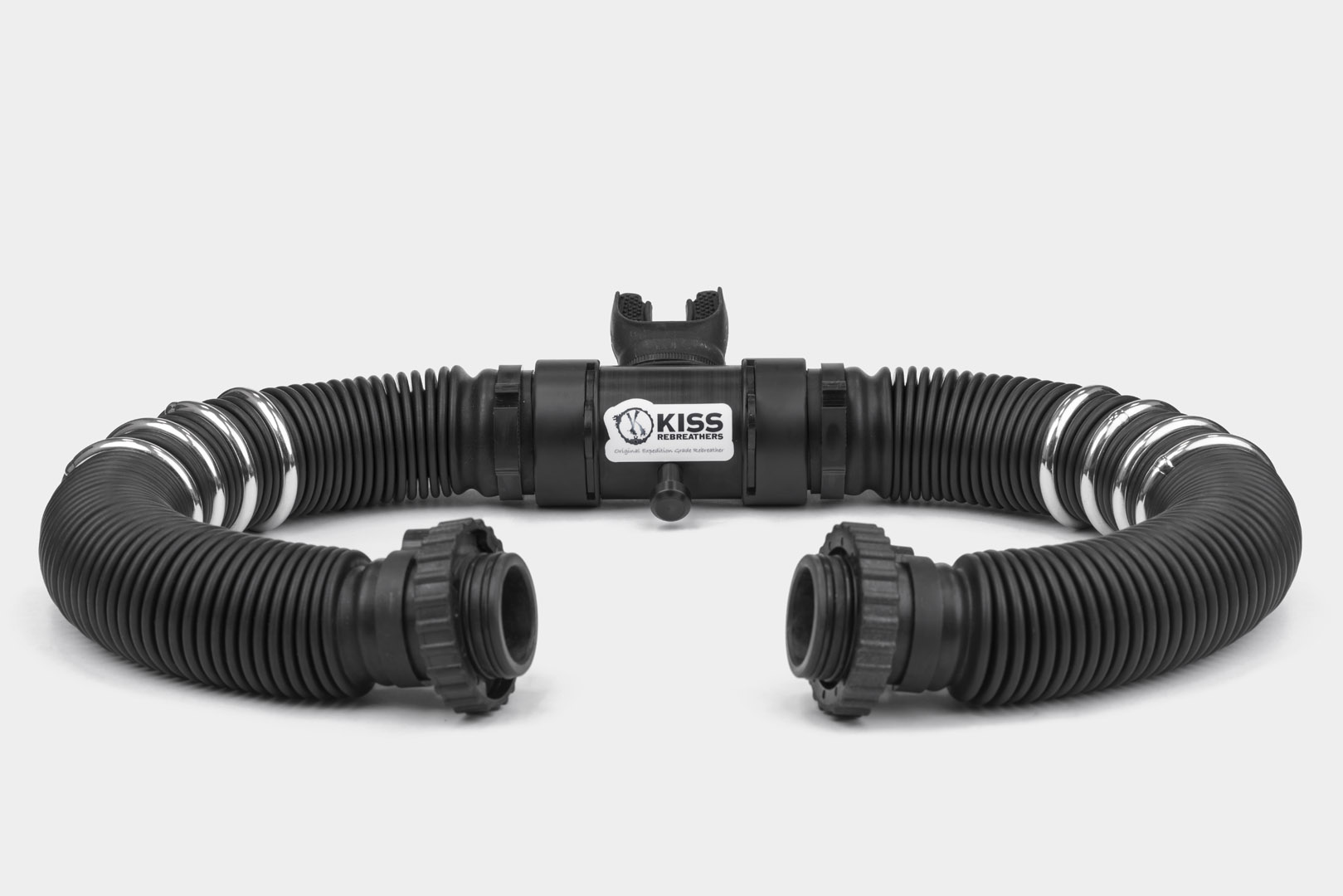
SCRUBBER CANISTER'S
The KISS Sidewinder has a unique dual scrubber-system. The gas flow is from DSV clockwise to the right-side scrubber canister to the counter-lung fitted below it through to the second scrubber canister on the left side. Then back to the DSV.
This configuration has some important advantages: a compact rebreather design, low work of breathing resistance, higher safety level and flood tolerance, efficient use of scrubber/absorbent.
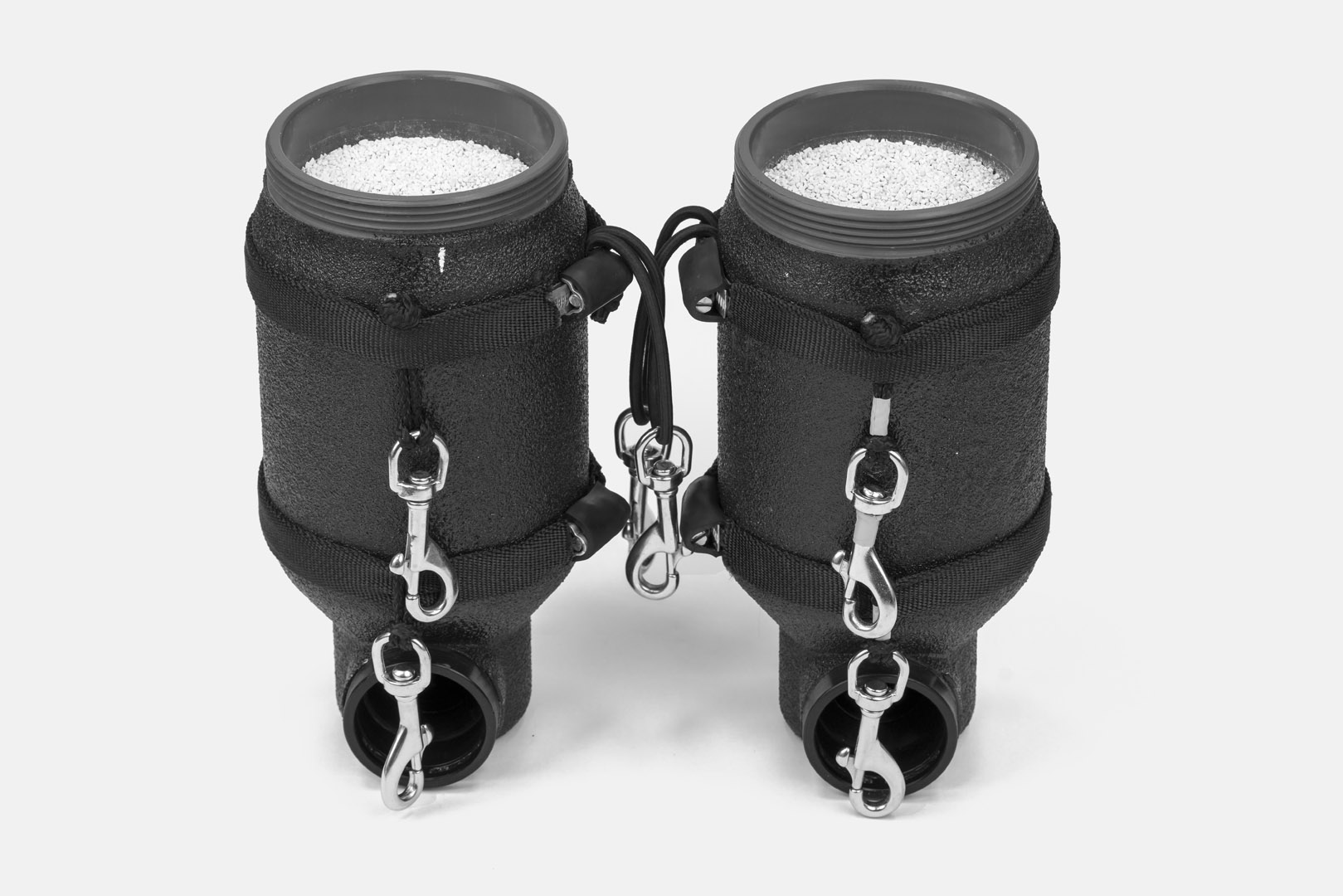
The absorbent material recommended for the KISS Sidewinder is manufactured by MP United (Molecular Products) and has a grain size of 2.5-5.0 mm. It is referred to as 4-8 grade or „CD”. Although the finer “797” or 8-12 grade can be used and give you longer duration it does create more of an effort to breathe through.
The capacity between the two canisters is approximately 3 kg and duration time depending on the water temperature is around 4 hours.
It is worth mentioning that there are scrubber versions available both for warm waters and cold waters. When diving in water temperature below 16 Celsius degrees, it is advisable to use scrubbers coated with a special insulating material, which increases the efficiency of the scrubber by up to 20%.
Should a diver wish to further expand on scrubber’s efficiency and at the same time improve comfort when diving in very cold water (2–4 Celsius), KISS Rebreathes offers an additional option of electrically heated scrubbers.
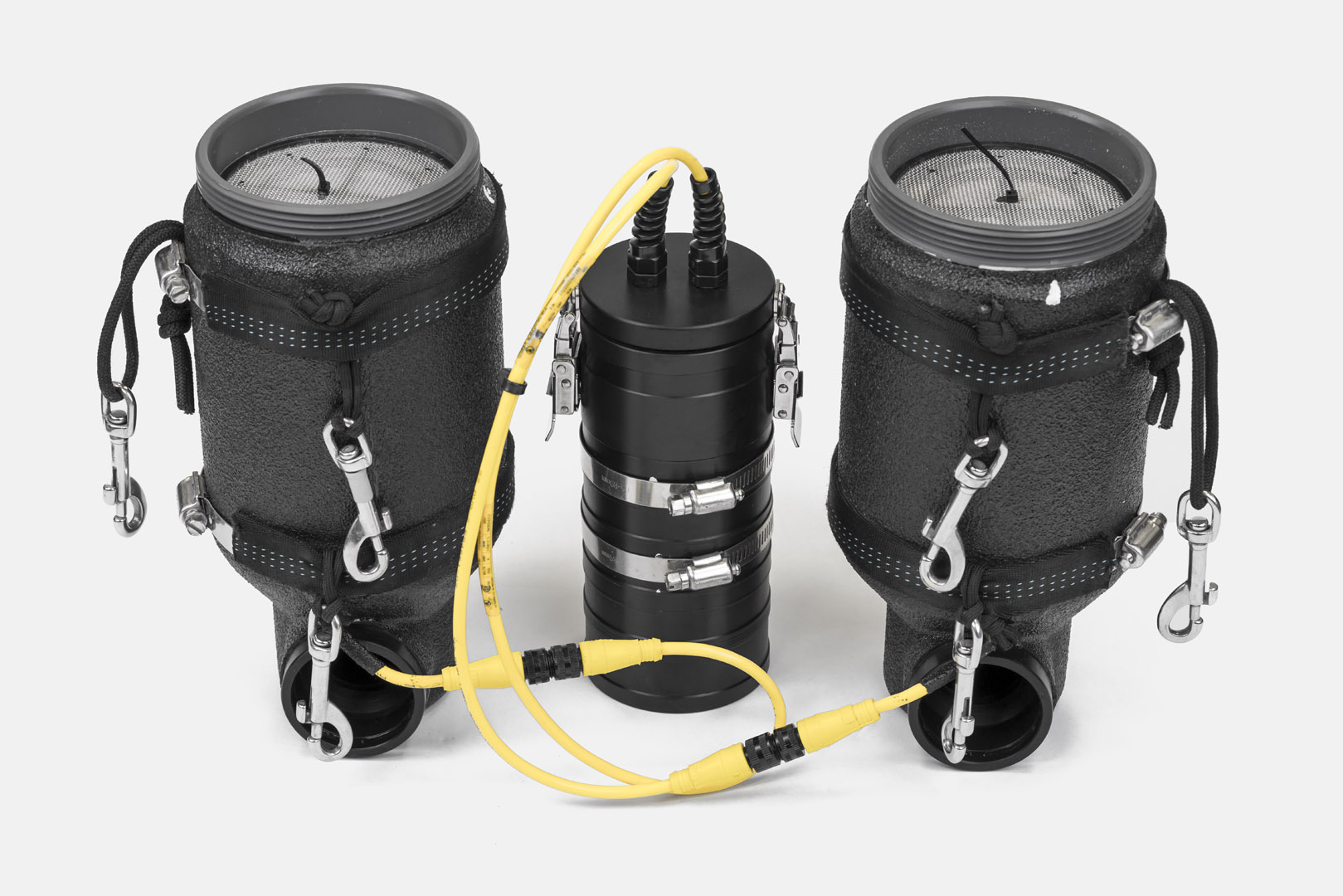
PPO2 DISPLAYS AND INSTRUMENTATION
The Spirit Sidewinder is a true mCCR, as it does not have any on-board electrical components such as a CPU-controlled solenoid. The diver is provided PPO2 information through a basic PPO2 display and/or dive computer connected to the three 22-D type oxygen sensors housed in the scrubber. The cell chamber for the three sensors sits below a removable sensor plate in the top of the left scrubber head. For technical diving, or for those who like diving redundant PPO2 monitoring systems, a second computer, HUD, or display can be added through a second available port in the head and a splitter (splitter or spliting board) enabling the connection of both cables to the same oxygen sensors.
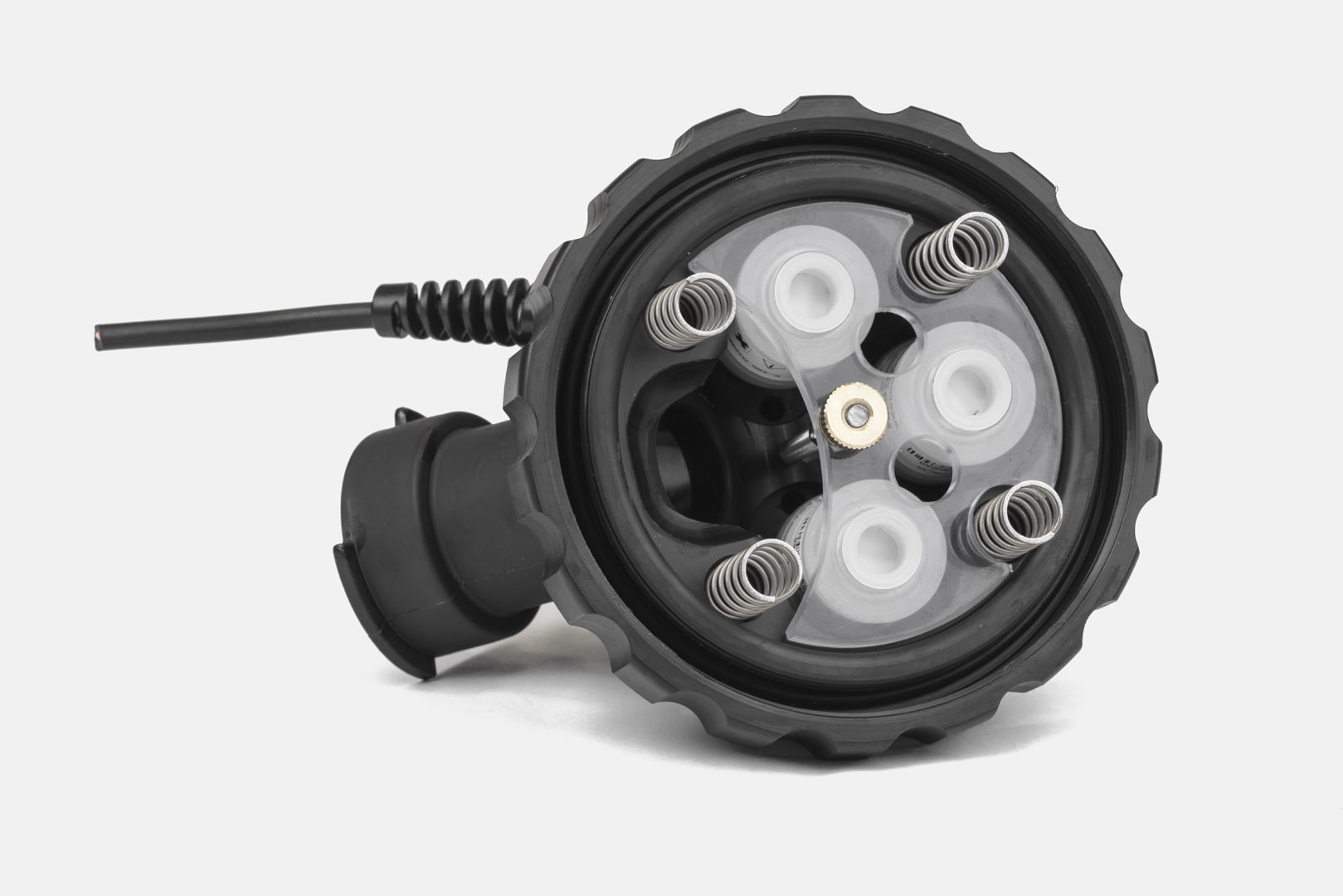
PRACTICAL INFOMRATION
The KISS Spirit Sidewinder must be equipped with a sidemount harness (not included in the set). KISS Sidewinder can be used with any sidemount harness.
It is also necessary to select appropriate cylinders for the KISS Sidewinder unit. While it is mostly a matter of personal choice, typically 2 liter cylinders are considered enough. Should we consider going for larger cylinders? Once you look at the capability of the scrubber stack, the answer is pretty obvious. A full 2 liter cylinder will leak oxygen at 0.7 liters per minute irrespective of depth, giving over 4 1/2 hours of oxygen
As for bailout and diluent cylinders we typically use default sidemount cylinders, volume of which may vary depending on the dive.
